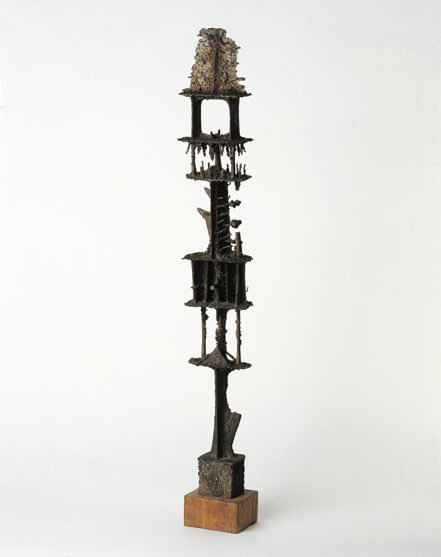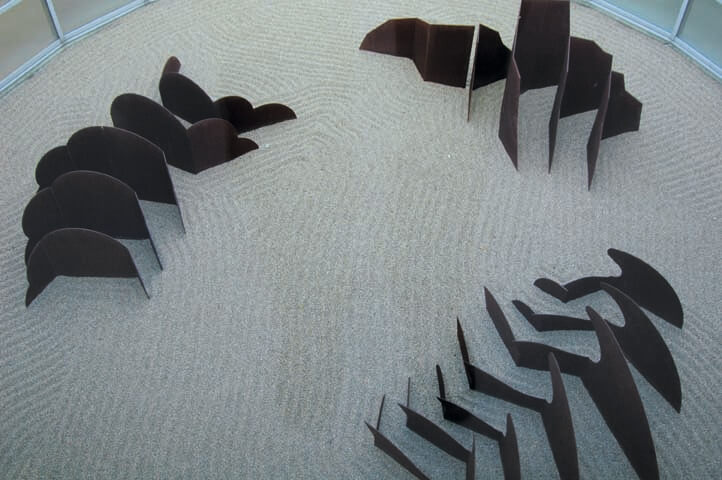Shinkichi Tajiri was born as Shinkichi George Tajiri on 7 December 1923 in Los Angeles. He was a versatile artist. Although he expressed himself in many disciplines, he made his contribution to Cobra as an experimental sculptor. In addition, he was a painter and also made photographs, films and computer drawings. With Tajiri, versatile also means internationally oriented: American because of his birthplace, Japanese because he was born to Japanese parents from an old aristocratic Samurai family, French because his artistic career started in Paris, and Dutch because he moved to the Netherlands in 1956.

After the Second World War, he studied at the Art Institute in Chicago and began to experiment with three-dimensional objects. In 1948, he went to Paris where he was taught by the sculptor Ossip Zadkine and came into contact with the Dutch Cobra artists Karel Appel, Constant and Corneille. Because of his spontaneous way of working and the important role the material played in his work, he was accepted into their group and invited to take part in the major Cobra exhibitions in Amsterdam in 1949 and in Liège in 1951, where he made his debut with a warrior in plaster.

About the first warriors (Samurai), who he would keep returning to using different techniques, Tajiri stated: “They expressed the need to purge myself of the horrors of the war.”. He depicted his experiences in spiky, aggressive assemblages welded in iron or cast in bronze, with long-legged figures and symbols of violence, sex and fertility. In 1953, he made reliefs worked with acids and nails that he called “scorched earth” to indicate the devastation of the very same earth with which he felt so connected. He expressed his amazement at the tremendous vital force of nature in a series of cast-iron delicate sculptures resembling plants, animated by an inner germinative power.

His fascination for the urge to live, to unfold into new unprecedented forms of nature, culminated in the poetic Zen garden that Tajiri designed in 1995 for the inner courtyard of the Cobra Museum of Modern Art entitled “Karesansui” which means dry landscape garden and was once described as “an attempt to fathom the secret laws of nature, especially its proportions, rhythm, energy and movement”. Tajiri has convincingly integrated Eastern culture into Western art. His entire oeuvre is imbued with “silent dynamics”. The works radiate a great energy while they stand “at ease”. This thinking in opposites that coexist, balance each other and can sometimes be equal, is characteristic of Eastern philosophy and Zen Buddhism, and is typical of Tajiri.

)